Introduction to In-Home ABA Assessments
An in-home Applied Behavior Analysis (ABA) assessment is a comprehensive step in developing personalized treatment plans for individuals with Autism Spectrum Disorder (ASD). Conducted in the comfort of the child's natural environment, this evaluation allows professionals to gather essential information about behaviors, skills, and needs, forming the foundation for effective therapy. Understanding what takes place during this process provides parents and caregivers with clarity and confidence as they prepare to involve their loved ones in this critical step towards growth and independence.
Overview of the Assessment Process
What occurs during an in-home ABA assessment?
During an in-home ABA assessment, a trained therapist conducts a comprehensive evaluation of the child's needs, behaviors, and skills. This process involves multiple steps to ensure a full understanding of the child's unique profile.
Firstly, direct observation plays a central role. The therapist watches how the child interacts with toys, peers, and family members, noting behaviors related to communication, social skills, and daily routines.
In addition to observation, interviews with parents or caregivers are conducted. These conversations gather valuable insights about the child's behavior patterns, preferences, and family routines that influence learning.
Standardized assessments, such as the Vineland Adaptive Behavior Scales and Verbal Behavior Milestones Assessment, are also used. These tests measure developmental skills and help identify specific areas for intervention.
Functional Behavior Assessment (FBA) is a critical component. It helps to identify the triggers (antecedents) and outcomes (consequences) of specific behaviors, enabling targeted behavior change strategies.
The thorough evaluation culminates in a detailed report. The results guide the development of an individualized treatment plan, outlining specific goals in communication, social skills, self-care, and other developmental areas.
Regular re-assessments every six months help track progress and refine intervention strategies. Overall, this process ensures that ABA therapy is tailored to each child's needs, maximizing its effectiveness.
Purpose and Goals of the Assessment
What is the purpose of an in-home ABA assessment?
An in-home ABA assessment is designed to gain a comprehensive understanding of an individual's unique behaviors, strengths, and needs within their everyday environment. Conducted by a Board Certified Behavior Analyst (BCBA), this assessment observes how the individual functions in their natural setting, considering aspects like communication, social interactions, daily routines, and adaptive skills.
The primary goal is to identify specific skill deficits and behavioral concerns that can be targeted in therapy. By understanding what skills the individual already possesses and where they need support, the BCBA can develop a tailored treatment plan. This plan includes measurable goals focused on increasing helpful behaviors such as communication and self-care, while decreasing harmful or disruptive behaviors.
During the assessment, the therapist interacts with the individual and utilizes observation, interviews, and sometimes standardized tools to gather detailed information. This enables the creation of personalized interventions that are relevant to the person’s age, interests, and developmental level.
Ultimately, the assessment lays the groundwork for effective therapy by pinpointing precise needs and opportunities for growth. It ensures that the ABA program is customized, practical, and aligned with fostering independence, skill acquisition, and improved quality of life for the individual.
Key Steps in Conducting an In-Home ABA Assessment
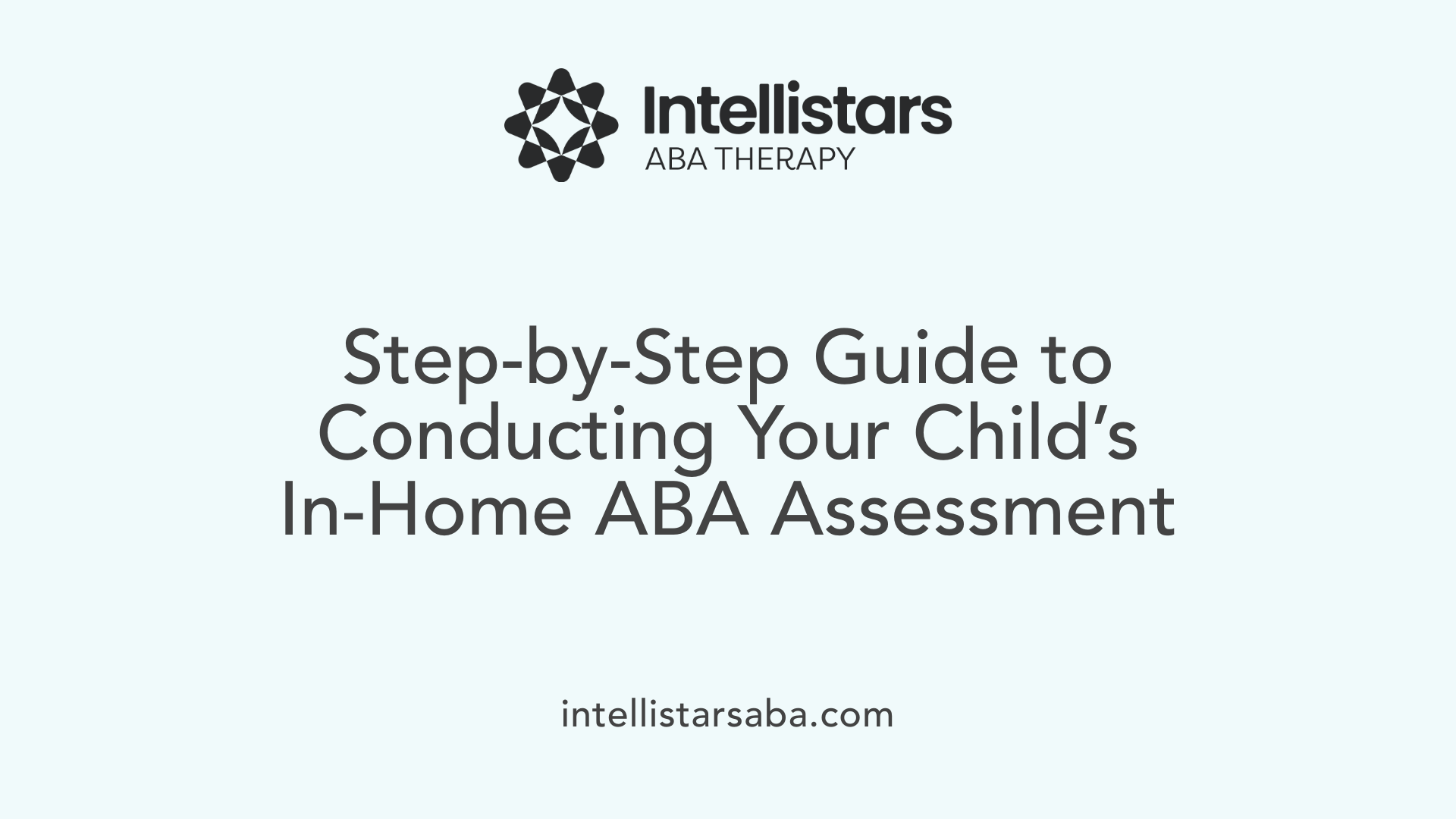
What steps are involved in conducting an in-home ABA assessment?
Performing an in-home ABA assessment is a detailed process designed to understand the child's unique behaviors and needs. It begins with preparatory steps such as scheduling appointments at a convenient time and preparing the environment for effective observation.
A vital early stage involves initial interviews with caregivers. During these discussions, the ABA professional gathers information about the child's developmental history, current behaviors, and family routines. Caregivers share insights about the child's strengths, challenges, and specific behaviors that may be problematic.
Following the interviews, direct behavioral observations take place within the home setting. The therapist watches how the child interacts with toys, family members, and their environment. This real-time observation helps identify antecedents (what triggers behaviors) and consequences (what maintains behaviors).
Skill and developmental assessments are also conducted. These evaluations measure the child's abilities across various domains, such as communication, social skills, and daily living activities. Standardized tools are often used to obtain objective data.
A critical component of the assessment is the Functional Behavior Assessment (FBA). This involves analyzing the purpose behind challenging behaviors to determine if they are, for example, to gain attention, escape a task, or obtain a preferred item. Methods used include ABC (Antecedent-Behavior-Consequence) data collection, questionnaires, and interviews.
Throughout this process, collaboration with caregivers is emphasized. Their involvement ensures the assessment captures a comprehensive picture of the child's behavior in natural settings. After collecting all relevant data, the behavior analyst reviews the information meticulously.
Based on the assessment, the BCBA develops a personalized treatment plan targeting specific skills and reducing harmful behaviors. This plan serves as a foundation for subsequent ABA therapy sessions, tailored to support the child's development and independence.
For further understanding, researching "Steps in in-home ABA assessment" can provide additional insights into each phase of this process.
Components and Methodologies of the Evaluation
An in-home ABA assessment involves a variety of evaluation techniques conducted by a trained behavior analyst known as a BCBA. The process begins with direct observations of the child in their natural environment, which provides valuable insight into their behaviors, interactions, and daily routines.
Standardized assessment tools play a crucial role in this evaluation. These tools, such as the VB-MAPP, ABLLS-R, and AFLS, help measure a child’s skills across multiple domains, including language, communication, social skills, and daily living activities.
Understanding the underlying reasons for challenging behaviors is essential. To this end, the BCBA conducts Functional Behavior Assessments (FBA) by identifying antecedents—what happens before a behavior occurs—and consequences—what happens after. This analysis helps determine the function or purpose of behaviors, which guides intervention planning.
Data collection is ongoing throughout the assessment. The analyst records detailed information on behaviors, triggers, and outcomes to analyze patterns over time. This data-driven approach enables precise goal setting and strategy development.
The initial assessment culminates in a comprehensive report that highlights strengths and areas needing support. It helps in creating an individualized treatment plan tailored to the child’s specific needs, preferences, and family circumstances.
Reassessments typically occur every six months. These follow-up evaluations review progress, refine goals, and adjust strategies to ensure continued development and success.
Through this thorough process, the assessment ensures that interventions are both effective and aligned with the child's unique profile, laying the groundwork for meaningful skill acquisition and behavior improvement.
Parent and Family Involvement During the Assessment
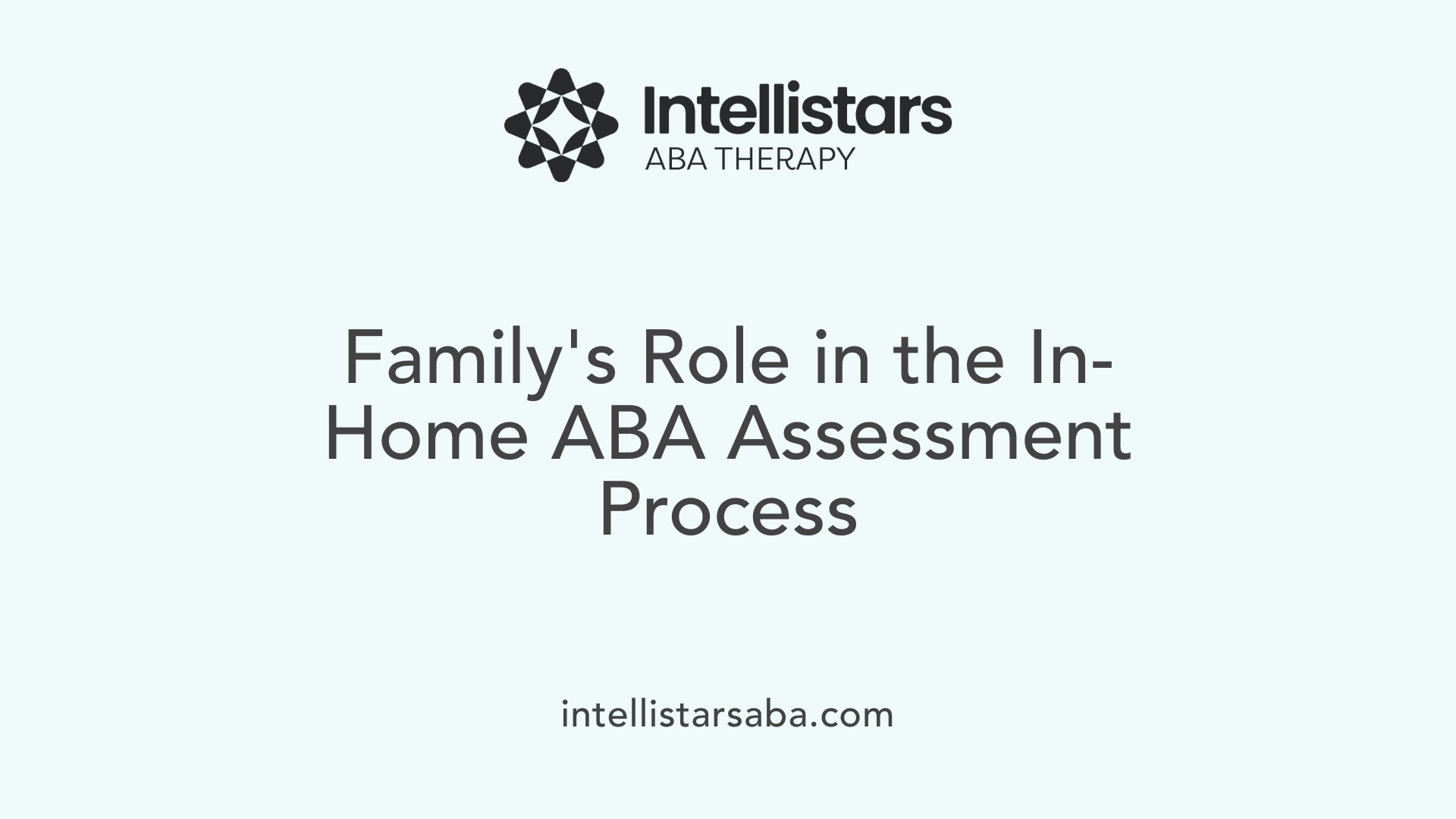
What can clients or parents expect during an in-home ABA assessment?
During an in-home ABA assessment, parents and clients can expect a thorough and personalized evaluation of the child's behaviors, communication skills, and daily routines. The process begins with direct observations of the child in familiar settings, focusing on play, social interactions, and learning activities.
Caregivers are actively involved throughout the assessment. They participate by answering questionnaires and participating in interviews that provide detailed insights into the child's strengths and challenges. These conversations help the assessor understand the child's behavior patterns, interests, and family dynamics.
The assessment also includes testing various skills, such as communication, motor, and self-care abilities—often using standardized tools and functional assessments to pinpoint specific needs.
Parents are encouraged to share real-time feedback and observations, which are crucial for developing an accurate picture of the child's natural behaviors in the home environment.
After completing the assessment, the BCBA reviews all collected information with the family. They work together to establish individualized goals and design a tailored intervention plan to begin promoting skill development and reducing challenging behaviors.
This collaborative process ensures that the treatment plan aligns with the child's unique needs and family priorities, setting a strong foundation for ongoing progress and regular reassessment.
Benefits and Impact of In-Home Assessments
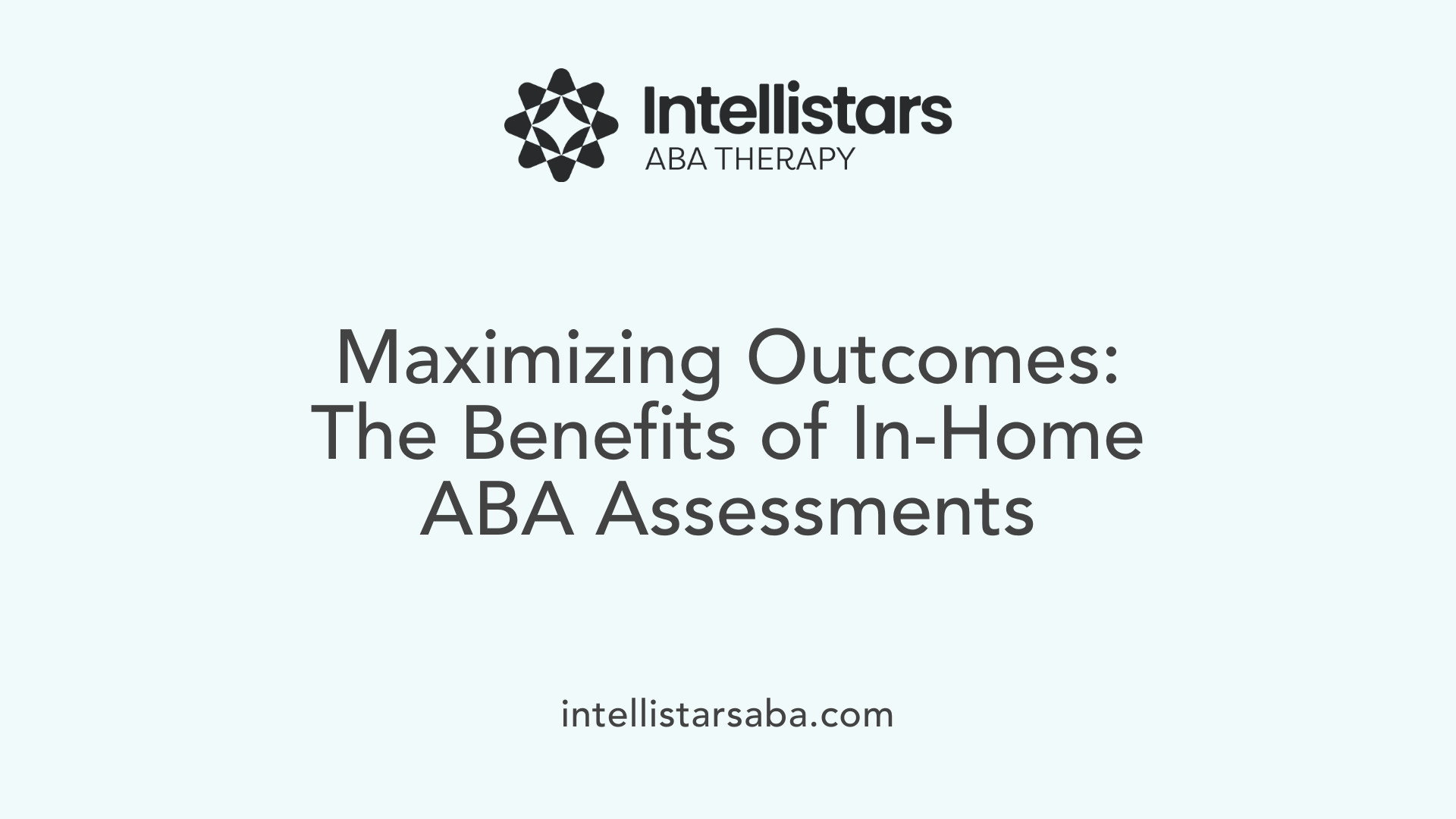
What are the benefits of conducting an in-home ABA assessment?
In-home ABA assessments offer many advantages that enhance the therapy process for children with autism. One major benefit is the ability to develop personalized interventions tailored to the child's specific environment and routines. Because assessments take place in the child's natural setting, therapists can observe behaviors and interactions as they happen during everyday activities, making the resulting treatment plans more relevant and effective.
Focusing on the natural environment encourages skill generalization—where children apply what they learn during therapy to real-life situations. This approach helps children develop functional skills, such as communication, self-care, and social interactions, in the contexts where they are most needed.
Moreover, in-home assessments actively involve family members, empowering them to participate in and support the child's progress. Caregivers gain valuable insight into strategies and reinforcement techniques, increasing consistency and continuity of therapy outside sessions.
The familiar home setting also reduces anxiety for the child, making it easier for them to engage and learn. Practical benefits include scheduling flexibility, often leading to more consistent participation, and potential cost savings compared to clinic-based therapies.
Overall, in-home assessments create a supportive, comfortable, and highly tailored environment, resulting in better long-term outcomes for children and increased confidence among families.
Preparing for and Supporting the Assessment
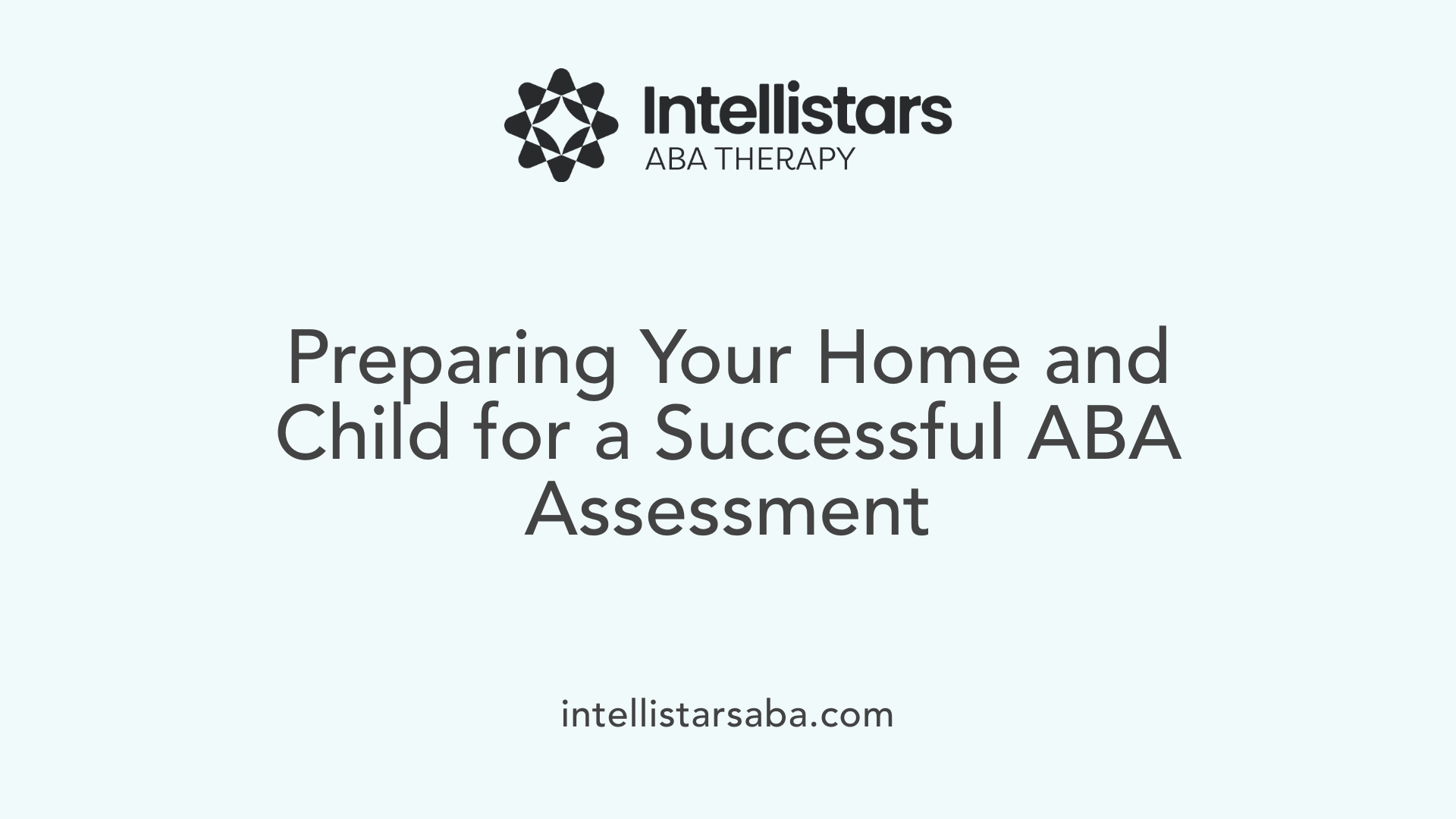
Guidance for families
Preparing for an in-home ABA assessment starts with open communication. Families should gather information about their child's behavior, developmental milestones, and any concerns they have. It's helpful to share details about your child's routines, preferences, and any challenges they face, such as communication difficulties or repetitive behaviors. This information allows the assessment team to understand your child's unique needs.
Environmental setup
Creating a conducive environment is crucial. Before the assessment, ensure the space is safe, quiet, and free from distractions. Set up a dedicated corner or room for the session, with familiar toys and comfort items your child enjoys. Using visual aids, schedule charts, or social stories can help your child understand what to expect during the assessment. This preparation helps your child feel more comfortable and engaged.
Engagement tips
Encourage your child's natural interactions by playing with their favorite toys and engaging in routines they enjoy. Practice simple communication prompts like asking questions or encouraging pointing and gesturing. This can give the therapist valuable insight into your child's communication skills. Keep calm and patient, and remember that your positive attitude can influence your child's comfort level.
Post-assessment planning
After the assessment, discuss the findings with the behavior analyst, including strengths and areas that need support. Use this information to plan tailored interventions and routines at home. Reassessments typically occur every six months to monitor progress and modify strategies as needed. Maintaining open communication and involving family members, including siblings, can enhance the effectiveness of the treatment.
| Step | Housekeeping Task | Tips | Benefits |
|---|---|---|---|
| Preparation | Gather behavioral information | Share your observations and concerns | Helps tailor the assessment |
| Environment | Set up a familiar space | Use toys, visual aids, and comfort items | Reduces anxiety and improves engagement |
| Engagement | Practice social interactions | Play favorites, encourage communication | Provides useful behavior data |
| Post-assessment | Review results with the team | Plan next steps and routines | Ensures continuous progress |
Principles and Methods Underlying the Assessment
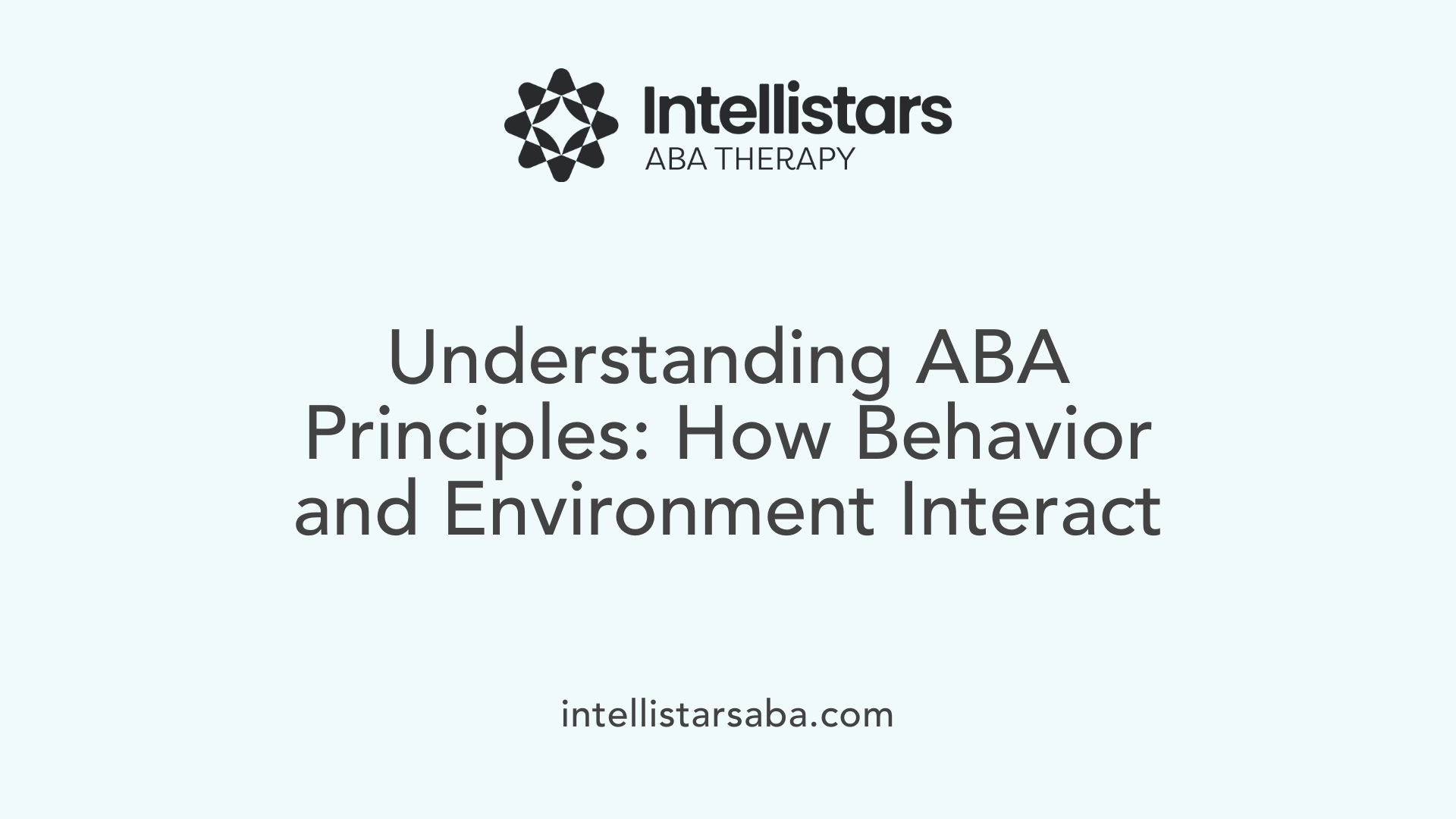 An in-home ABA assessment is grounded in the core principles of the science of learning and behavior. This involves understanding how environmental factors influence behavior, both in terms of antecedents (what happens before a behavior) and consequences (what follows the behavior). The assessment process employs the ABC Model—Antecedent, Behavior, Consequence—which helps identify triggers, behaviors, and outcomes.
An in-home ABA assessment is grounded in the core principles of the science of learning and behavior. This involves understanding how environmental factors influence behavior, both in terms of antecedents (what happens before a behavior) and consequences (what follows the behavior). The assessment process employs the ABC Model—Antecedent, Behavior, Consequence—which helps identify triggers, behaviors, and outcomes.
To gather accurate information, therapists perform systematic observations and collect precise behavioral data. This empirical approach allows for a clear understanding of the child's behavior patterns and triggers. Through Functional Behavior Assessments (FBA), therapists identify the primary functions that a behavior serves, enabling targeted intervention planning.
Methods used in assessments include identifying environmental triggers, analyzing behavioral patterns, and data-driven decision-making. The assessment process also emphasizes developing individualized, evidence-based strategies that respect the child's dignity and promote meaningful change. Techniques such as positive reinforcement, extinction, and discrete trial training (DTT) are employed to shape desired behaviors while reducing problematic ones.
Overall, ABA assessments combine scientific rigor with personalized approaches, ensuring interventions are tailored to meet each child's unique needs and promote lasting developmental progress.
Summing Up the In-Home Assessment Experience
An in-home ABA assessment is an essential step in understanding a child's unique behaviors and needs within their natural environment. It involves a systematic process of observation, testing, and collaboration that lays the groundwork for tailored interventions. By recording behaviors, analyzing environmental factors, and engaging family members, professionals develop comprehensive treatment plans that promote skill development and behavioral improvements. This process not only benefits the child but also empowers families, offering a practical, comfortable, and highly effective pathway toward achieving meaningful progress.






